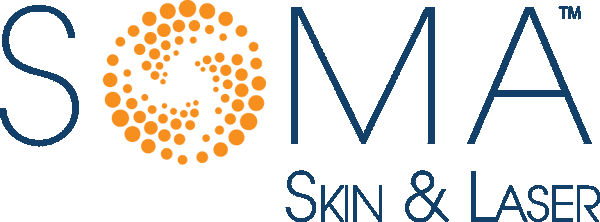Treat nail fungus with laser in New Jersey

Fungal infection of the fingernails and toenails (also termed onychomycosis) is a distressing problem that is often difficult to cure. If you’re tired of dealing with the discomfort and embarrassment caused by toenail fungus, you are not alone. Millions of people in New Jersey and across the world suffer from this common fungal infection. Infected nails can be unsightly and uncomfortable. Nail fungus is often treated with oral antifungal medications, such as Lamisil or Sporanox, but treatment is required for an extended period, at least 12 weeks. Often blood tests will be required before and during treatment. Topical antifungals, such as Jublia and Kerydin, can also be effective but must be applied for about a year. Even with antifungal medications, nail fungus can be difficult to treat, and can recur.
For nail fungus that is difficult to treat or for patients that cannot take oral antifungal medications, laser treatment of nail fungus is an option. Nd:YAG laser treatment can help you regain healthy and beautiful toenails, free from fungal infections.
Understanding Toenail Fungus
Toenail fungus, medically known as onychomycosis, is a stubborn and unsightly condition that can affect both the appearance and health of your toenails. It typically starts as a white or yellow spot under the tip of your toenail and can progressively worsen, causing the nail to thicken, become discolored, and even crumble.
Which laser is used to treat nail fungus?
A number of lasers have been studied for the treatment of nail fungus, but the most commonly used one is a long-pulsed Nd:YAG laser. There are many brands of long-pulsed Nd:YAG laser that can be used for the treatment of nail fungus. The PinPointe laser, for example, is a long-pulsed Nd:YAG laser. At SOMA Skin & Laser we use a powerful long-pulsed Nd:YAG laser (GentleMAX from Candela) to treat nail fungus.
Why Nd:YAG Laser Treatment?
Nd:YAG laser treatment has emerged as a groundbreaking solution for toenail fungus, offering several advantages over traditional treatments like topical creams and oral medications:
Precision: Nd:YAG laser targets the infection directly without harming surrounding tissue, ensuring a highly precise and effective treatment.
Quick and Convenient: Nd:YAG laser treatment is quick, often taking less than 30 minutes to treat multiple nails. There’s no downtime, and you can resume your daily activities immediately.
High Success Rate: Studies have shown that Nd:YAG laser treatment has a high success rate in eliminating toenail fungus.
No Systemic Side Effects: Unlike oral medications that can have side effects, Nd:YAG laser treatment is non-invasive and safe.
How is nail fungus treated with laser?
Prior to treatment, topical medications (Urea) might be prescribed to reduce nail thickness and allow the laser to better penetrate. At each session the entirety of each infected nail is treated with the laser. Typically three passes are made on each nail, with each pass separated by a minute or two. The entire laser treatment of nail fungus takes a few minutes for each nail. Treatments are repeated every two weeks. Six to 12 treatment sessions may be required.
The Nd:YAG laser works by emitting specific wavelengths of light that are absorbed by the fungal cells, effectively destroying them without causing harm to healthy tissue. Here’s what you can expect during your laser treatment session:
Preparation: Your toenails should be cleaned and trimmed to ensure the laser can penetrate the affected area effectively. Use of urea beforehand may be prescribed. All nail polish should be removed.
Laser Application: The Nd:YAG laser is directed at the infected toenail, targeting the fungus.
Repeat Sessions: Depending on the severity of your infection, multiple sessions will likely be needed to completely eliminate the fungus.
Post-Treatment Care: You’ll receive instructions on how to care for your nails post-treatment to prevent reinfection.
Is laser treatment of nail fungus painful?
Treatment of nail fungus with the long-pulse Nd:YAG laser is slightly uncomfortable. The feeling is primarily one of heat. Most patients tolerate the procedure well.
What do I do after laser treatment of nail fungus?
It can take many months for a new healthy nail to fully grow out. While the nail is growing out, treatment of the area with a topical antifungal should be continued to prevent reinfection. The feet should also be treated daily with antifungal cream or powder. Any other fungal infections, such as jock itch, should be treated as well to prevent reinfeciton.
Is laser treatment of nail fungus covered by insurance?
Laser treatment of nail fungus is not covered by insurance. Schedule a consultation for your nail fungus to explore your treatment options and receive a personalize price quote and treatment plan.
How can I get a laser treatment for nail fungus consultation?
Call 973-763-7546 to reach SOMA Skin & Laser for a laser treatment of nail fungus consultation today. When seeking Nd:YAG laser treatment for toenail fungus in New Jersey, it’s essential to choose a reputable and experienced provider. Look for a clinic that specializes in laser treatments.
Nd:YAG laser treatment offers hope for those suffering from toenail fungus in New Jersey. With its precision, safety, and high success rate, it’s a solution that can help you regain healthy and beautiful toenails. Say goodbye to the discomfort and embarrassment of toenail fungus and say hello to a confident, fungus-free foot. Contact SOMA Skin & Laser today to start your journey towards healthier nails.
